The Gokyo and Everest 15-day trek in the Himalayas of Nepal is an unforgettable journey through a land of stunning natural beauty and rich culture. The region is home to some of the hardiest and most hospitable people in Nepal, including the legendary Sherpas who have helped countless mountaineers reach the summit of Mount Everest.
The trek explores the tranquil Gokyo Valley, Sagarmatha National Park. Witness Gokyo Ri (5357m) and Kala Patthar (5550m) alongside Everest (8848m), Lhotse (8516m), Makalu (8485m), and Cho Oyu (8201m). The region boasts a rich wildlife population. Hikers frequently spot yaks, donkeys, musk deer, Himalayan mountain bears, wild mountain goats, snow leopards, blue sheep, langur monkeys, mountain hawks, and the gloriously colored pheasants (lophophoruses) along the trail.
Starting of Our Trek
The Everest Base Camp trek begins with a thrilling flight to Lukla. You’ll trek through villages, reaching Gokyo and Everest Base Camp. Hike Kala Patthar (5,550m) for stunning mountain views.
The Sagarmatha National Park boasts a diverse range of flora and fauna. Here, unique species of plants and animals thrive, some of which exist nowhere else on Earth. This park serves as a sanctuary for these irreplaceable creatures and plants. The landscape ranges from lush valleys and forests to glaciers, offering trekkers a truly unique and immersive experience of region.
The Alpine Club of Himalaya’s Gokyo and Everest 15-day trek is designed to provide trekkers with a more diverse experience of the region, going beyond the traditional Everest Base Camp trek. The trek offers many vantage points for photographers to capture the essence of this region, making it a popular choice for nature lovers, adventure seekers, and photographers alike.
Conclusion
The Gokyo and Everest trek is an unforgettable 15-day adventure in Nepal’s Himalayas. Trekkers experience stunning scenery, rich Sherpa culture, and unique wildlife. Diverse landscapes offer breathtaking views, making this trek a must-do for Himalayan explorers.
Itinerary
The flight into Nepal is breathtaking with views of mountains and lush hills. Once you arrive at Kathmandu International Airport and are done with your immigration formalities, you will be warmly welcomed by our representative will drive you to your hotel. After a brief rest head out to explore the wonders of Kathmandu Valley. Later in the afternoon join in for a brief orientation regarding the trek followed by a welcome dinner.
Meals: Welcome Dinner
Accommodation: Hotel
Catch an early morning exciting flight from Kathmandu Airport to Lukla witnessing views of mountain giants. Lukla, a picturesque mountaintop Sherpa settlement is the starting point of your trek.
From Lukla head towards to Phakding, descend towards the Dudh Koshi River passing through various settlements of Chheplung, Ghat, Sano and Thulo Gumela and Chorten and monasteries of Drangdrak Gompa and Pema Choling Gompa with breathtaking views of sacred mountain peaks of Kumbila and sister summit Kusum Kanguru.
Phakding nestled at an elevation of 2,610 meters and is a small Sherpa settlement hidden in the heart of the Dudh Koshi Valley.
Meals: Breakfast, Lunch, Dinner
Accommodation: Tea House
Today you will be heading to Namche Bazar known as the "Sherpa capital”. The trail passes the Dudh Koshi, a milky glacial river up to Monjo crossing a number of suspension bridges and the iconic Hillary Suspension Bridge.
After a brief rest, head towards Namche Bazaar on an uphill trail on a steep path to an amazing high bridge over the Dudh Koshi River gorge, and just before this bridge, the Dudh Koshi is met by its tributary, the Bhote Koshi. As you gain altitude, you’ll catch your first glimpse of Mount Everest peering over the Lhotse-Nuptse ridge, from here Namche is a short hike away.
Meals: Breakfast, Lunch, Dinner
Accommodation: Tea House
Today is your day for acclimatization, as you ascend higher, your body must acclimate to the thinner air at greater elevations. The village has various vantage points perfect for an acclimatization hike.
Head towards any vantage point before dawn and witness mesmerizing views of the sunrise over the Himalayas. The rays of the sun change the snowy white peak into various colors. Bask in the views of Mount Everest, Ama Dablam, Thamserku, Kongde, Lhotse, and other mountain peaks.
After lunch head towards Thami a village located above the Bhote Khola River Valley. Traversing through the lush woodlands of the Sagarmatha National Park you will reach the national park headquarters above the village. From here witness panoramic views of the Mahalangur range and the mighty Everest. Explore the national park headquarters and learn about the Sherpa lifestyle, culture, and biodiversity of the region. After exploring the region head back towards Namche, and along the way witness the grand views of dusk.
Meals: Breakfast, Lunch, Dinner
Accommodation: Tea House
After breakfast start the trek following a steep ascent out of the Namche. As you progress on the trial cross the deep wilderness of rhododendron, juniper, and large conifer forest. Along this section keep an eye out as you may witness the unique bio-diversity of the region. Next, progressing out of the woodland reach the wide alpine grassland of Yak Kharka.
There after following the gentle section witness grand views of Khumbu La Pass and Taboche. Crossing several villages eventually reach Dole.
Meals: Breakfast, Lunch, Dinner
Accommodation: Tea House
Wake up early and enjoy the majestic views of sunrise. After breakfast start the adventure towards Gokyo. Following the high routes head out of Dole and reach the village of Machhermo.
Next traversing across high alpine grounds follow, small Strems and rivers emerging from the Ngozumba glacier. Along this section also witness grand views of Cholatse and Cho Oyu peaks. As you progress on follow a steep rocky incline and reach Gokyo. For the next 2 days, you will be exploring the wonders of Gokyo.
Meals: Breakfast, Lunch, Dinner
Accommodation: Tea House
Gokyo Ri is the highlight of the Gokyo Valley Trek and is an epic vantage point for the mountain views. Following an uphill section will lead you to the summit of Gokyo Ri, start by traversing across the stream on the northern end of the village and ascending for a couple of hours and you will reach the summit marked by a cradle of prayer flags. The climb is non-technical, but the altitude may be a problem for some, so take it slow and have frequent rest.
From the summit, witness splendid panoramic views of Cho Oyu, Everest, Lhotse, Makalu, Cholatse, and Taboche, with the Ngozumpa Glacier cutting across in front like a massive tear in the landscape. Catch the views of a series of emerald, green lakes. After exploring the Ri and soaking in the majestic views retrace your steps back towards the village.
Next, after a brief refreshment break head towards Thangnak. The trek takes you following the downhill routes across flat terrain of brown and grey shades.
Upon reaching Thangnak relax and rest enjoying the grand views around.
Meals: Breakfast, Lunch, Dinner
Accommodation: Tea House
Wake up before dawn and after breakfast start the trek. As you will be crossing a high pass its very crucial to start early as the weather may deteriorate as the day goes on. Following the ascending route head towards the Pass. The climb is non-technical but take it slow and have frequent rest.
From the summit of the pass witness grand views of Chola Lake, Mt. AmaDablam and other various peaks, glaciers, moraines, and lakes. After spending a brief time at the pass following the downhill trails reach the village of Dzongla.
Meals: Breakfast, Lunch, Dinner
Accommodation: Tea House
After breakfast start the trek following across moraine and descending alongside Chola Lake. From this section witness stunning views of the mountains and wide valley. Progressing on the valley soaking in the views of glaciers, high passes moraine, and rings of mountains eventually reach Lobuche.
Upon reaching Lobuche relax and rest in the high alpine meadows soaking in the views.
Meals: Breakfast, Lunch, Dinner
Accommodation: Tea House
Start the trek following the high trails out of Lobuche. Along the trail, witness views of several towering peaks, including Everest, Nuptse, and other enormous peaks. Following the moraine arrives at Gorakshep, one on the world’s most isolated and highest settlements.
After a brief rest at Gorak Shep leave your heavy backpacks head towards Everest Base Camp. Traversing along the turquoise water of Gorak Shep Lake with views of Changtse Peak in Tibet and the Lho La depression. Crossing glaciers, icefalls, frozen pools of meltwater, exposed icy walls, and large boulders finally reach the Everest Base Camp.
After basking in the foothills of the world’s highest peak retrace your steps back to Gorak Shep.
Meals: Breakfast, Lunch, Dinner
Accommodation: Tea House
Today wake up before dawn and head towards the famous vantage point of the Khumbu region, Kala Patthar at an elevation of 5545 meters. Apart from the altitude, the climb is non-technical. Upon reaching the summit basking in the views of Everest, Pumori, Nuptse, Changtse, Ama Dablam, Taweche, Kantega, Lhotse, and even Everest base camp snuggled at the base of the Khumbu Ice Fall. After spending a brief time at the summit retrace your steps back to Gorak Shep.
Upon reaching Gorak Shep and after a brief rest head towards Lobuche, and towards Dughla. From here following a different trail reach Pheriche.
Meals: Breakfast, Lunch, Dinner
Accommodation: Tea House
From Pheriche, descends to Tsuro Wog and cross the rapids of Khumbu Khola. Next cross various settlement of Orsho, Shomare, and upper Pangboche and finally to Tengboche. Tengboche village. Here explore, the largest monastery with views of Mt. Everest, Nuptse, Lhotse, Ama Dablam, and Thamserku on the backdrop.
From Tengboche, move towards Phunki Tenga and descend to Sanasa and Kyangjuma and then finally to Namche Bazar. Along the trail cross sections of lush woodlands of rhododendron, mixture of confers, oaks with orchid and moss-draped trees and miles of undergrowth. Once you reach Namche Bazar head towards your accommodation and later explore the aera, there are various restaurants and pubs around the area.
Meals: Breakfast, Lunch, Dinner
Accommodation: Tea House
Today start walking out of Namche Bazaar on a downhill trail along the Dudh Koshi River route. Before arriving to Lukla, cross multiple suspension bridges and pass through several ancient monasteries and settlements. Once you arrive at Lukla rest and later celebrate your last day on the mountains.
Meals: Breakfast, Lunch, Dinner
Accommodation: Tea House
After an early morning breakfast, head towards Lukla Airport and fly back to Kathmandu. The picturesque flight from Lukla to Kathmandu seems like a delight, once you arrive at Kathmandu you’ll be driven to your accommodation. The valley has various tourist attractions, head out on a guided tour or explore the city on your own.
Later in the evening join in for a special dinner program to mark the end of your adventure with your guide and our representatives.
Meals: Breakfast, Lunch, Farewell Dinner
Accommodation: Hotel.
Today you’ll be returning back to your country. The Alpine Club of Himalayas representative will drop you at the airport three hours before your flight departs. If you prefer to stay longer, you can consult us for short tours such as game drives at National parks, rafting, mountain biking, Tibet, India, or Bhutan tours, etc.
Meals: Breakfast
Note: All of the above-mentioned trekking hours and distances are estimations and should only be used as a general guideline.









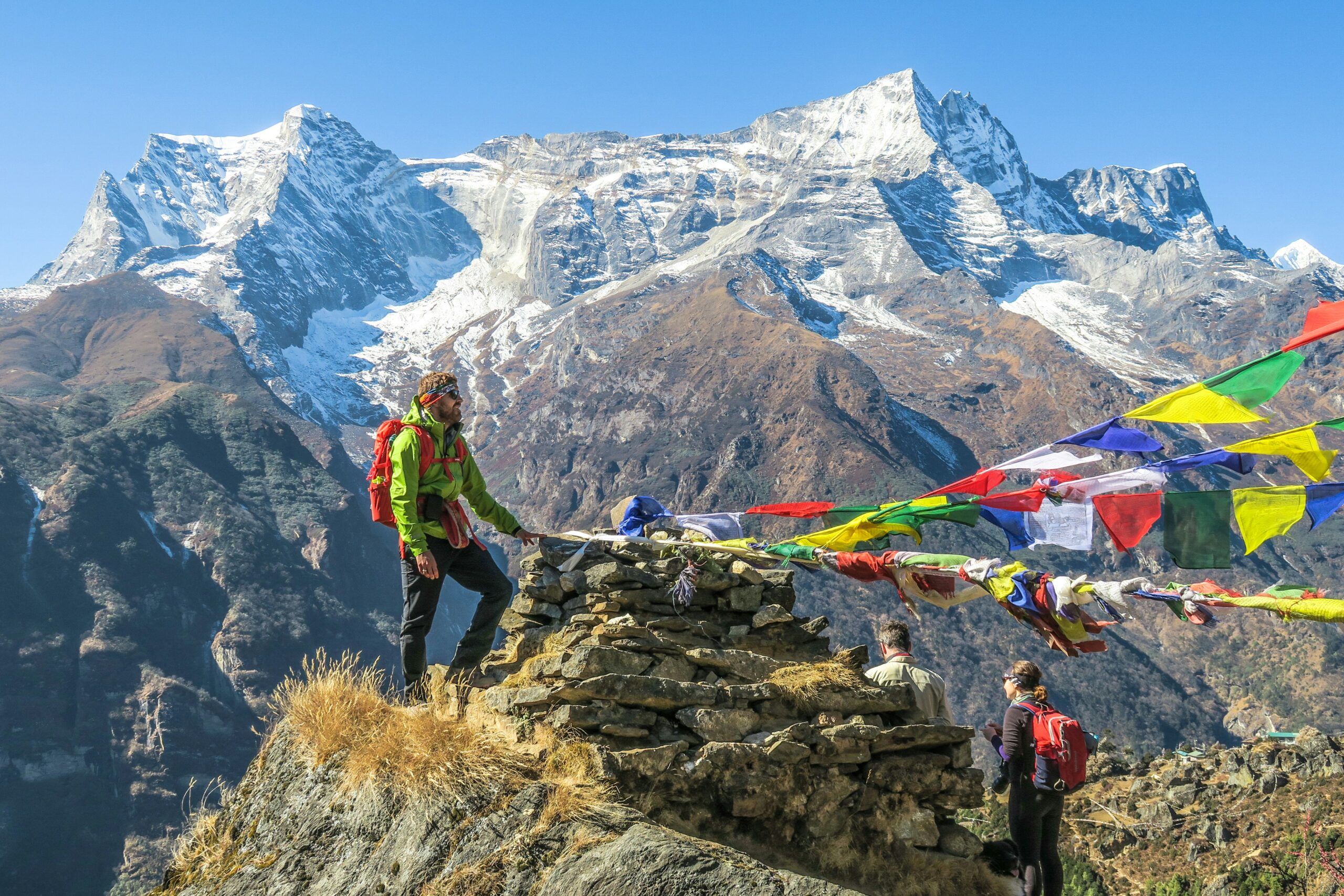
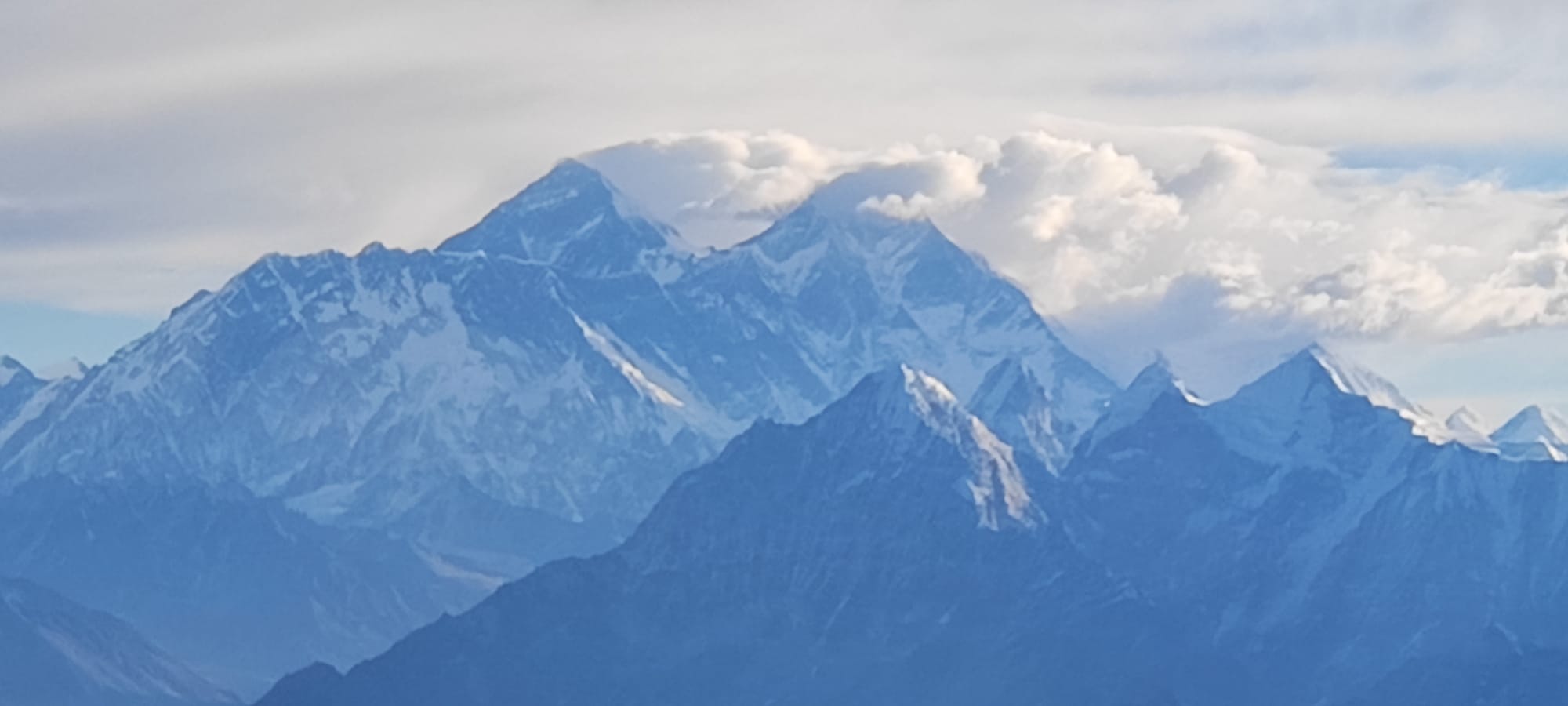

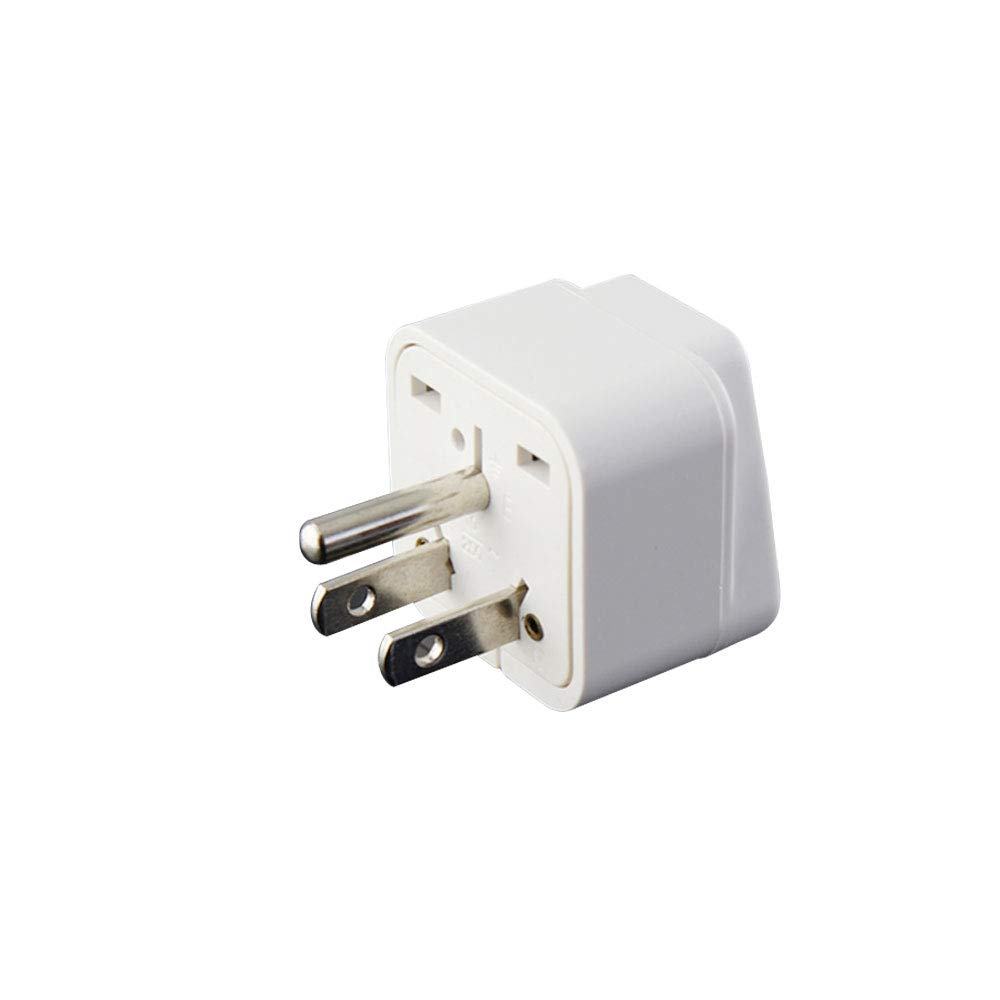
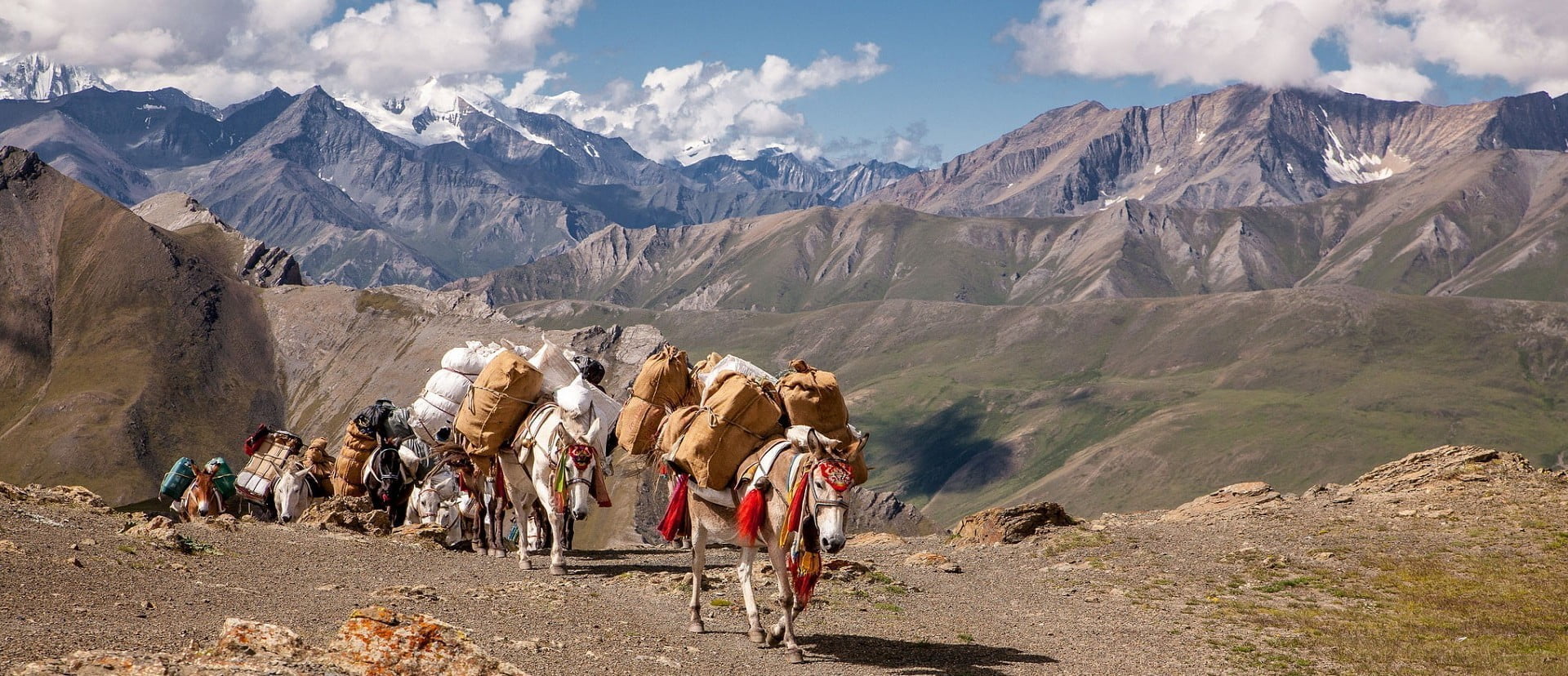
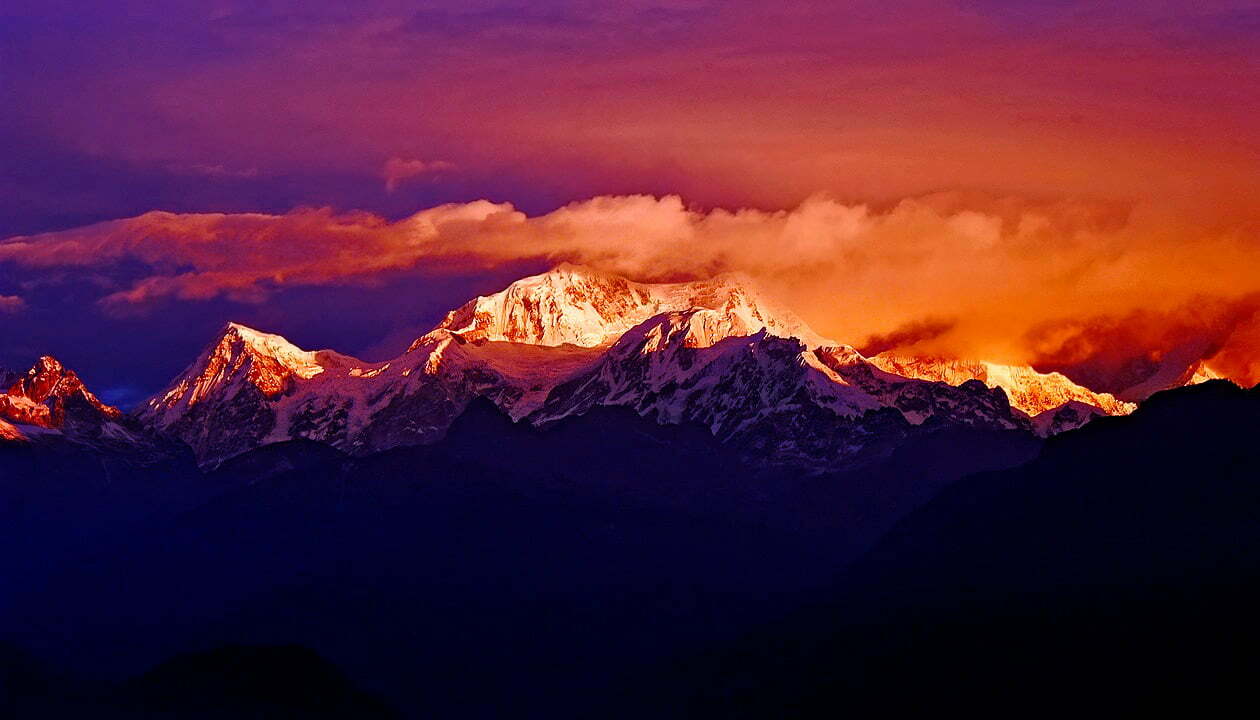


Write a Review